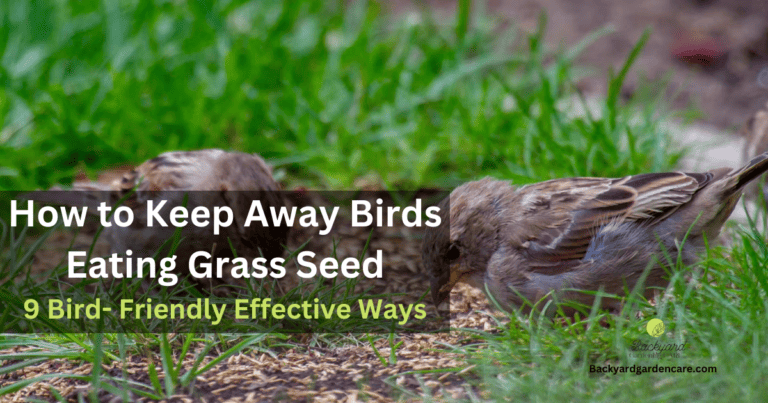How to Identify Snake Holes: A Comprehensive Guide with 8 Signs of Snakes in Your Yard.
Snake holes can be found in various environments, from forests to backyard gardens. Identifying these holes is essential for anyone who wants to stay safe and avoid potential encounters with snakes.
Especially those who live in areas with a high population of snakes. Identifying snake holes is an important skill to have in order to ensure your safety and the safety of those around you.
This complete article will provide you with the knowledge and tools to confidently identify snake holes.
It is important for you to know how to identify snake holes whether you are a homeowner, hiker, nature lover, camper, or live in a rural area to maintain your personal safety.

So, let’s embark on this exciting journey together and unravel the secrets of these amazing underground places.
Understand that How to Identify Snake Holes and Snake Habitats
Recognizing snake holes in your lawn and understanding snake habitats is paramount for ensuring safety, and I can attest to this from personal experience. Living in an area with a substantial snake population, I’ve learned to identify these signs of potential danger.
Snake holes often appear as small, round openings in the ground, usually near shrubs, rocks, or other secluded spots. My familiarity with these indicators has enabled me to take proactive measures to safeguard my family and pets from potential snake encounters.
Moreover, comprehending snake habitats, such as overgrown vegetation or areas with ample prey, has allowed me to create a safer outdoor environment. My personal experience underscores the importance of acquiring this knowledge to coexist with these reptiles safely and confidently.
Snakes are fascinating creatures that inhabit various environments, each with their own unique characteristics. Understanding the identifying features of snake holes can provide valuable insights into their habitat and behaviour. and now in this section, I’ll Identify Snake Habitats.
Identifying Snake Habitats
Various snake species have specific habitat preferences. For example, cottonmouth snakes thrive in water-rich environments such as drainage ditches, ponds, lakes, and streams. It is very important to stop these types of bugs and snakes that come out from drainage to prevent potential encounters in your outdoor spaces.
On the other hand, garter snakes are commonly found in tall grass, wetlands near water, and wooded areas. Snakes seek shelter in different locations within their habitats, including tree hollows, under logs, leaf litter, underground holes, rock outcroppings, and abandoned burrows.
These hiding spots offer protection from predators, hunting opportunities, places to lay eggs, and shelter for temperature regulation. Therefore, if you notice a snake entering a hole in your backyard, it could also indicate the presence of other burrowing wildlife. Your backyard, basement, or porch could potentially serve as shelter for snakes.
Shed Snake Skins
Snakes periodically shed their scaly skin as they grow. This skin-shedding process is called moulting, and it helps snakes repair damaged skin and get rid of parasites. Most growing snakes shed their skin around once a month.
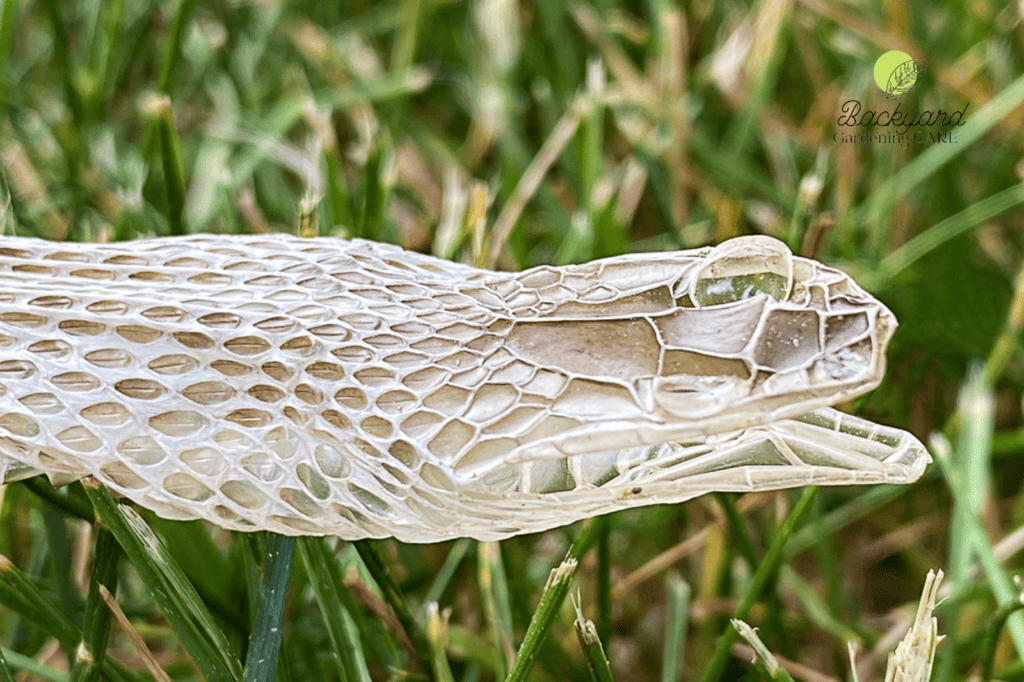
When getting ready to shed, snakes often rub against rocks or sticks to help loosen the old skin. Shed snake skins can provide valuable information about the snake’s previous scale patterns, body shape, and even the appearance of its eyes.
However, finding shed skins can be difficult as they are usually eaten by rodents or insects quickly. If you encounter a snake during its shedding period or at any other time, it is important to leave it alone. Snakes can easily get irritated during shedding and may bite if they feel threatened.
Examining Snake Feces
Snakes, like other animals, release waste in the form of faeces. One can gather information about their diet and presence in an area by analyzing snake faeces.
Snakes typically eat insects, small mammals like mice and rats, and smaller reptiles. Therefore, it is possible to find remnants of their prey, such as hair and bone fragments, in snake faeces. The size of the faeces depends on the snake’s length and size.
Generally, snake faeces appear as thick, pasty smears with a dark brown colour and a white chalky deposit at one end. Similar to shed skins, snake faeces decompose relatively quickly.
In short, by recognizing the different environments snakes prefer, the shedding of their skins, and the characteristics of their faeces, we can better understand the presence of snakes in a particular area.
It is important to approach snakes with caution and respect, as they play a vital role in maintaining the balance of ecosystems.
Do Snakes Dig Holes?
The fact that snakes often hide in holes is well known, but it is important to understand that they don’t actually create these holes themselves, so it’s important to understand that do snakes dig holes, they actually take refuge in them.
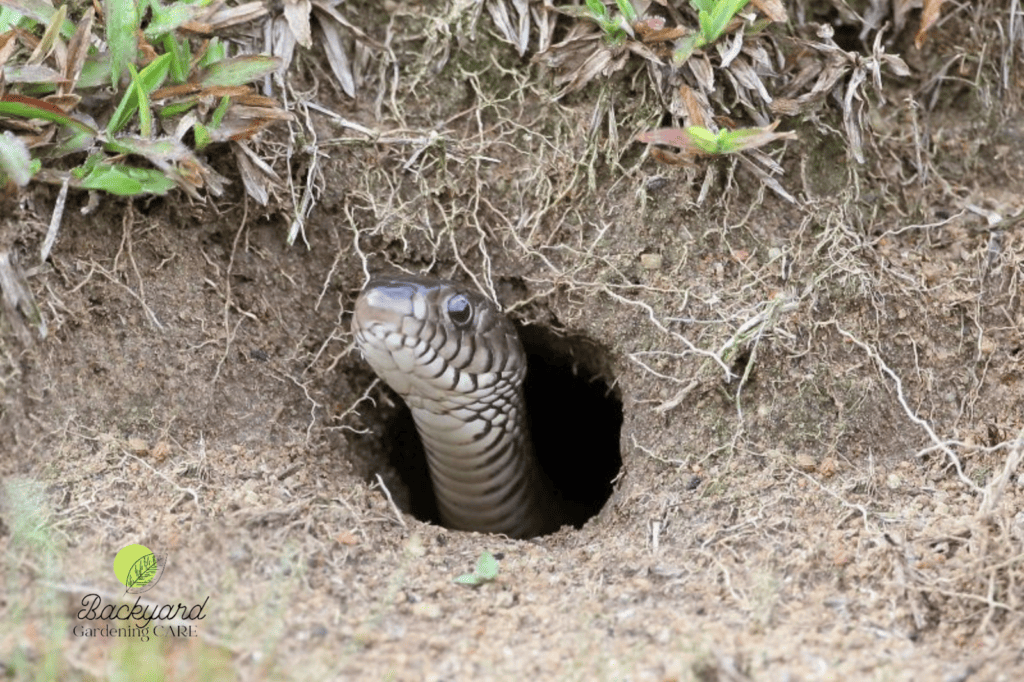
If you find holes in your yard or garden, you may wonder if they are snake holes. In this section, we will delve into the topic of snakes and their use of holes and compare snake holes to those made by other animals, such as turtles, tortoises, frogs, chipmunks, moles, raccoons, and other rodents.
Snake Habitat Preferences
Snakes have particular preferences when it comes to their hiding places. They frequently look for tree hollows, spaces beneath rocks, barks, and leaf litter to seek shelter.
Moreover, snakes may even build nests in human structures such as homes, barns, yards, and spaces between walls. These areas offer them protection, warmth, and chances for hunting.
Differentiating Chipmunk Holes from Snake Holes
It is important to differentiate between chipmunk holes and snake holes in order to identify the main diggers of these holes and determine the presence of snakes in your environment.
While snakes may use holes made by other animals, it is crucial to identify the primary diggers accurately. Here are some key differences.
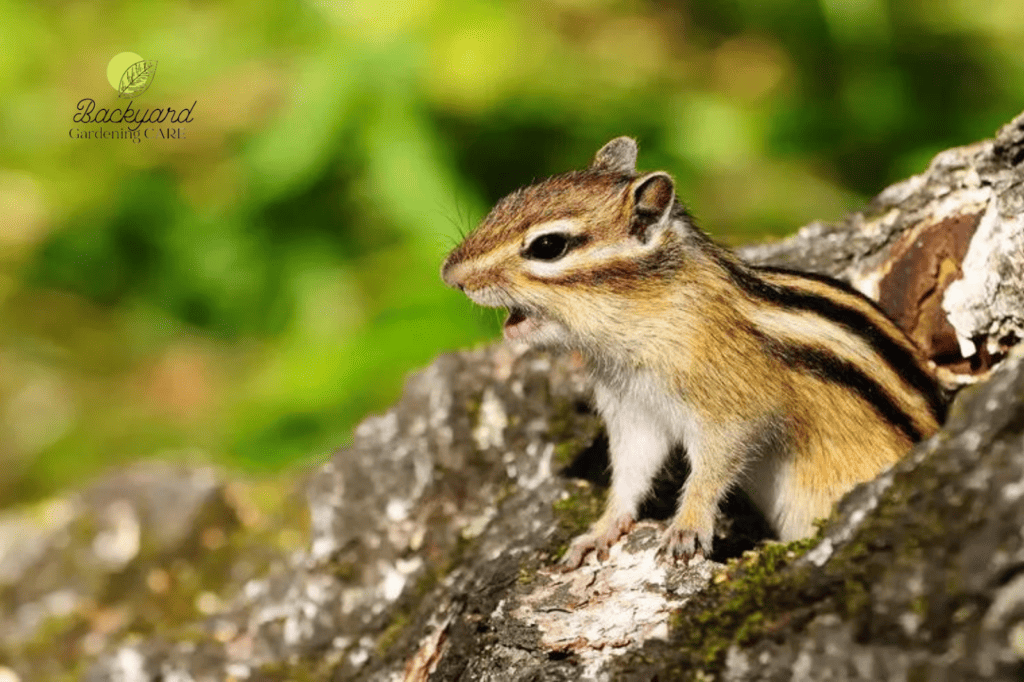
The openings of chipmunk holes usually don’t have any soil around them, making them look clean and even. Additionally, you might see chipmunk faeces near the hole, which have a different appearance and smell compared to snake faeces.
Snake Holes: Snakes that occupy holes previously dug by chipmunks or other animals might leave traces indicating their presence. A snake’s faeces can usually be identified because they smell and look different from other types.
There is an easy way to determine whether chipmunks or snakes are responsible for the hole by placing chipmunk food close to the hole in order to perform a simple test.
A food supply that disappears quickly can indicate the presence of chipmunks, but if it remains untouched for days, it can suggest snake activity, so further investigation may need to be conducted.
Identifying Other Animal Holes
It’s also important to consider the possibility of holes being created by animals other than snakes or chipmunks. Moles, raccoons, rodents, turtles, tortoises, and frogs are also known to dig holes.
Recognizing the unique features of their holes can help with accurate identification. These animals often provide clear indications of their presence, such as soil mounds, distinctive digging patterns, or tracks found near the holes.
While snakes utilize holes for hiding and shelter, they do not create these holes themselves. Identification of snake holes versus those made by chipmunks or other animals requires understanding their differences.
It is possible to gain insights into the wildlife residing in your environment by understanding the characteristics of various animal holes and observing the accompanying signs exhibited by them. Keep in mind that snakes, wildlife, and their natural habitats should be approached with caution and should be respected.
Comparing Mole Holes to Snake Holes
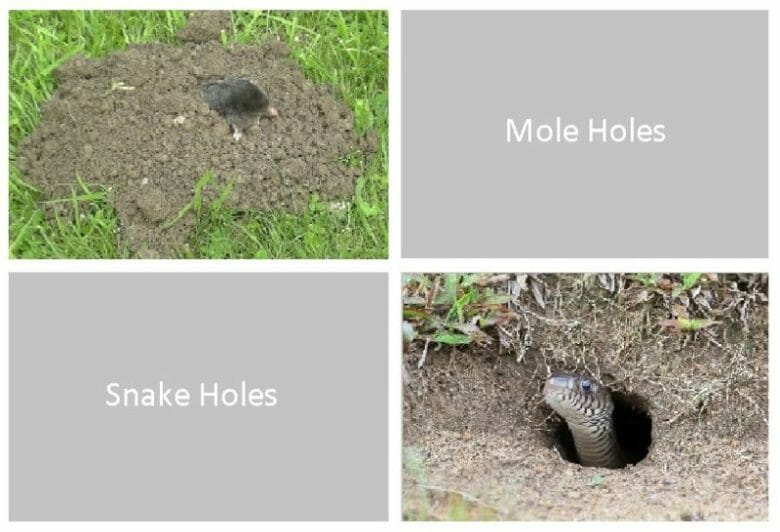
When encountering holes in your garden or yard, it’s important to distinguish between mole holes and snake holes. While there are similarities between the two, there are also key differences that can help identify the responsible creatures.
In this section, we will explore the characteristics of mole holes vs snake holes and their distinguishing features.
Mole Holes: Structure and Appearance
Mole holes and chipmunk holes have similar sizes and appearances. However, a notable distinction is that mounds of dug-up dirt and soil often encircle mole holes.
This is because moles dig more vigorously than chipmunks, causing the displaced soil to form visible mounds around their holes.
Despite this disruption, mole holes serve as an ideal habitat for snakes. Although the mole has a larger body, snakes can eat it and steal its home.
Mole Feces and Odor
Examining the faeces and odor associated with the holes can give additional information about whether they are mole holes or snake holes. Ground Moles are small, burrowing mammals that can be found in gardens, Moles are fascinating creatures that live beneath the surface of your lawn and garden. While they may cause some frustration for homeowners and gardeners, it’s important to understand their behaviour and habits in order to effectively deal with them and minimize their impact on your property.
Mole faeces are often found outside the hole since moles usually deposit their waste away from their burrows. There is a difference between the appearance and consistency of mole faeces and those of snake faeces.
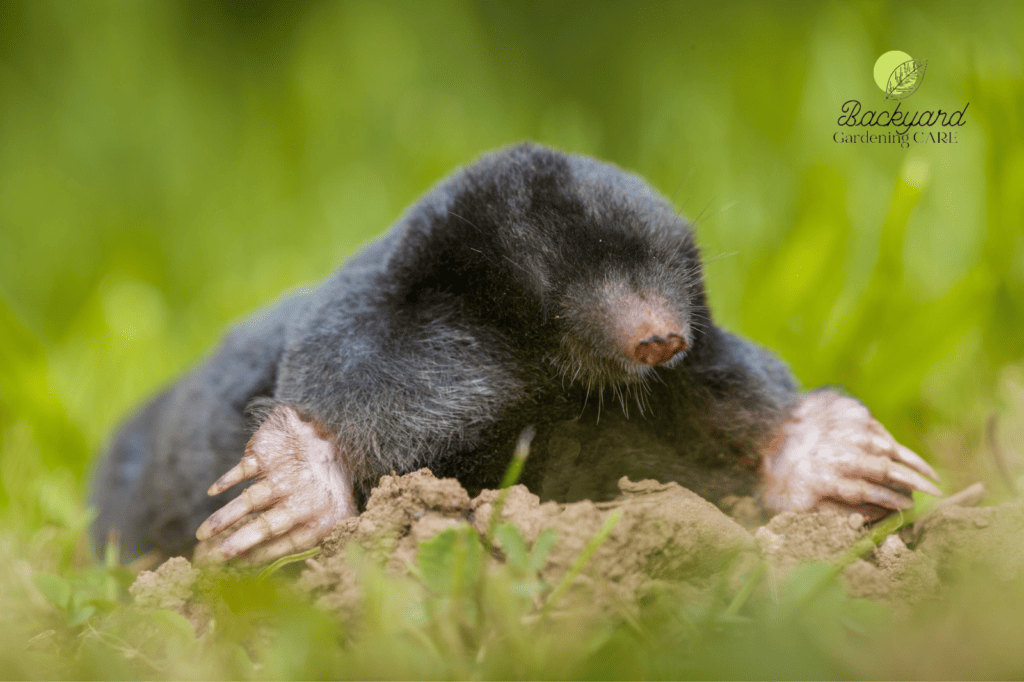
Moreover, moles have a noticeable smell, which can be more offensive than snakes’ odor. On the contrary, snakes tend to release odors when they feel threatened as a defence mechanism against attackers.
Differentiating Snake Holes
Although snakes can occupy mole holes, there are certain characteristics that can help distinguish snake holes from mole holes.
Snake holes are often similar in size and appearance to chipmunks and mole holes, but they might not have the usual surrounding mounds of soil found with mole holes.
Additionally, the presence of shed snake skins near the hole or the detection of snake faeces can provide stronger indications of snake activity.
In short, differentiating between mole holes and snake holes is crucial when identifying the creatures residing in your surroundings. By understanding these above distinguishing features, you can gain insights into the wildlife that inhabits your garden or yard.
Signs of Snakes in Your Yard
What to Look Out for Snakes are fascinating creatures that play an important role in our ecosystem. However, when they start slithering around in our yards, it can be a cause for concern.
Whether you fear snakes or want to ensure the safety of your family and pets, identifying the signs of snakes in your yard is crucial. Here, we will explore the common indicators of snakes in your outdoor space.
1. Shed Snake Skins
The presence of shed snake skins in your yard is one of the most obvious signs that you have snakes in your yard. Snakes shed their skins regularly as they grow, and these discarded skins can often be found in hidden corners or near their favourite hiding spots.
In this case, the shed skin will be transparent and shaped like a snake, giving insight into what species may lurk nearby and the colour and shape of the shed skin itself.
2. Snake Tracks

Like any other animal, snakes leave behind tracks as they move around. These tracks may appear as a series of parallel lines or a wavy pattern on the ground, usually resembling a series of S-shaped markings.
Snake tracks are more likely found in your yard’s mud, sand, or dusty areas. By familiarizing yourself with these tracks, you can identify the type of snake and its general movement patterns.
3. Snake Droppings
There is no doubt that snake droppings, also known as snake faeces or snake scat, can offer many incredible insights about the presence of snakes in your yard. The colours of the droppings may vary, ranging from light brown, brown, or black to greenish.
4. Snake Holes and Burrows
There are many times when snakes will dig caves or holes in the ground in order to seek shelter and escape the heat of the day.
Snakes utilize existing holes or burrows created by other animals. Look for small, tunnel-like openings in your yard, especially in areas with dense vegetation or near structures.
5. Disturbed or Shifting Black Mulch
It is important that you pay attention to any disturbances or shifting of Black mulch that occurs in your yard if there is mulch there. It is common for snakes to use mulch as a place to hide, and their movements can create noticeable disruptions in the landscape. Keep an eye out for any unusual movement or displacement of the mulch, as this could indicate the presence of a snake.
6. Unusual Sounds or Movements
Generally speaking, snakes are very quiet creatures, but if you hear rustling sounds or see sudden movements in the grass or bushes, there’s a possibility that there’s a snake nearby. Snakes move swiftly and smoothly, so any sudden disturbance of foliage without an apparent cause should be a cause for concern.
7. Sightings
Snakes are one of the most obvious signs of their presence in your yard, and it is always best to be on the lookout for them. Snakes are typically more active during the warmer months, so keep an eye out for them basking in the sun or slithering through the grass.
Snakes can be found in a variety of colours and patterns, so it’s important to familiarize yourself with the species native to your area to identify them better.
It’s important to note that not all snakes are harmful or hateful. In fact, many snakes play a vital role in controlling rodent populations.
However, if you have concerns about snakes in your yard or if you suspect a venomous snake may be present, it’s best to contact a professional wildlife removal service for assistance.
8. Unusual Behavior of Other Animals
While not a direct sign of snakes, the behaviour of other animals in your yard can also indicate their presence. Keep an eye out for birds or small mammals acting unusually nervous, as they may be sensing the presence of a snake nearby.
Additionally, if you notice a sudden decrease in the number of small animals or birds in your yard, it could indirectly indicate that snakes are present and preying on them.
Dealing with Snakes in Your Yard.
If you discover signs of snakes in your yard, it’s crucial to prioritize safety. While most snakes are harmless, some species can be venomous and pose a risk to humans and pets. Here are a few tips on how to handle snakes in your yard.
1. Educate Yourself:
Get to know the different snake species in your area. Familiarize yourself with the venomous snakes that may be present and the non-venomous ones that are harmless.
2. Create a Snake-Friendly Environment:
Make your yard less attractive to snakes by removing potential hiding spots. Clear away debris, trim overgrown vegetation, and seal any gaps or cracks in structures that may serve as entry points.
3. Seek Professional Help:
If you’re unsure about the type of snake or feel uncomfortable dealing with it can take appropriate measures to ensure the safety of your family, pets, and the snakes themselves.
Remember, snakes play an important role in maintaining the balance of nature, so it’s essential to coexist with them peacefully. It is imperative that you stay alert, stay safe, and observe the beauty of these remarkable creatures from a safe distance.
Conclusion
being able to identify snake holes can be crucial for staying safe in snake-prone areas. By learning to recognize the distinctive features of snake holes, such as their size, shape, and location, individuals can take appropriate precautions to avoid potential encounters with snakes.
Remember always to exercise caution and seek professional assistance if necessary when dealing with snake habitats. Stay informed, stay vigilant, and stay safe.
Furthermore, respecting and protecting snake habitats is crucial, as these creatures play vital roles in ecosystems. By being informed and cautious, we can coexist peacefully with snakes and appreciate their important place in the natural world.
FAQs
What Kind of Holes Do Snakes Dig?
Snakes are not known for digging holes. While they may use existing burrows or crevices for shelter, they typically do not create holes in the ground. Instead, snakes are excellent at squeezing through small openings or hiding in natural hiding spots like tall grass, rock crevices, or tree hollows.
Where is a Snakes Hole?
Snakes are not known for digging holes. While they may use Chipmunk Holes, Mole Holes, or crevices for shelter, they typically do not create their holes in the ground.
Instead, snakes are excellent at squeezing through small openings or hiding in natural hiding spots like tall grass, rock crevices, or tree hollows.
What to Do if You Find a Snake Hole in Your Yard?
If you find a snake hole in your yard, it is important to stay calm and avoid disturbing the area. Do not attempt to handle or remove the snake yourself, as it could be venomous. Keep children and pets away from the hole.
Contact a local wildlife professional or snake removal service to assess the situation and safely remove the snake if necessary. Taking precautions and seeking professional help will ensure you’re and the snake’s safety.
Albert Phipps

Hello, I’m Albert Phipps, your trusted professional gardener. I have a deep passion for nurturing nature’s beauty, With years of experience in landscaping. I’m dedicated to creating lush, vibrant gardens and outdoor spaces.
If you’re seeking guidance on plant selection, grass care, pest control products, garden design, or lawn maintenance tips, don’t hesitate to get in touch. I’m here to help you transform your outdoor space into a thriving and serene landscape.






